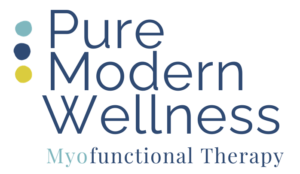

Mouth Breathing: Uncovering Hidden Health Risks and Solutions
In recent years, chronic mouth breathing has become a silent epidemic affecting individuals of all ages and backgrounds. Breathing is a fundamental physiological process necessary for sustaining life. Consistent breathing through the mouth instead of the nose has implications for health and well-being. In this article, I will discuss the alarming rise of mouth breathing, its effect on health, and potential solutions to combat this habit.
The Rising Trend
Mouth breathing once considered a temporary response to nasal congestion or physical exertion, has evolved into a chronic condition affecting millions globally. Factors such as sedentary lifestyle, environmental pollutants, and anatomical predispositions contribute to the increasing prevalence of mouth breathing across diverse populations. Children, in particular, are susceptible to developing habitual mouth-breathing patterns, which can persist into adulthood if left unaddressed.
Health Implications
The repercussions of chronic mouth breathing extend far beyond mere inconvenience or social stigma. Research indicates that mouth breathing disrupts the body’s natural respiratory processes, resulting in various health complications from dental malocclusions and facial deformities to sleep disorders and compromised immune function. The consequences of unaddressed mouth breathing are profound and multifaceted. Moreover, chronic mouth breathing has been linked to cognitive deficits, behavioral issues, and poor academic performance in children, highlighting its detrimental impact on developmental outcomes. Research is linking ADHD to underlying sleep disorder breathing as a result of mouth breathing.
Root Causes and Contributing Factors
Mouth breathing is a posture habit that can develop for numerous reasons. Understanding the root causes and contributing factors of mouth breathing is essential for developing targeted interventions. Some of the most common contributing factors include:
- Structural abnormalities such as a deviated septum, enlarged tonsils, adenoids, or narrow airways can obstruct nasal breathing, predisposing individuals to resort to mouth breathing as a compensatory mechanism.
- Environmental factors such as air pollution, allergens, and secondhand smoke further exacerbate nasal congestion, perpetuating the cycle of mouth breathing.
- Habitual oral habits such as thumb or finger sucking, nail biting or object biting. When mouth breathing is present many times, a “tongue thrust” habit will often develop that further impacts speech, swallowing, breathing, and chewing.
Solutions and Interventions
Addressing mouth breathing requires a multifaceted approach encompassing preventive measures and therapeutic interventions. Educating individuals about the importance of nasal breathing and promoting healthy habits with breathing from an early age are crucial steps in mitigating the prevalence of mouth breathing. In some cases, identifying and treating underlying anatomical abnormalities through surgical intervention or orthodontic therapy may restore proper nasal airflow and alleviate chronic mouth breathing.
Lifestyle modifications such as maintaining optimal indoor air quality, practicing nasal breathing exercises, and addressing allergies or sinus issues can support long-term respiratory health. Behavioral therapy with myofunctional exercises aimed at retraining the oral and facial muscles plays a pivotal role in correcting dysfunctional breathing patterns. Myofunctional therapy also aids in relapse prevention of any anatomical intervention treatment resulting from mouth breathing.
Conclusion
The epidemic of chronic mouth breathing represents a significant public health challenge with far-reaching implications for individuals, families, and communities worldwide. By raising awareness, advocating for early intervention, and implementing evidence-based strategies, we can combat this silent epidemic and pave the way for a healthier, more vibrant future.
Read other blog post


